From sparks to sizzle: Mastering the art of cooking over coals when travelling
Improvising ideas for campfire meals can turn simple ingredients into memorable, flavourful dishes.
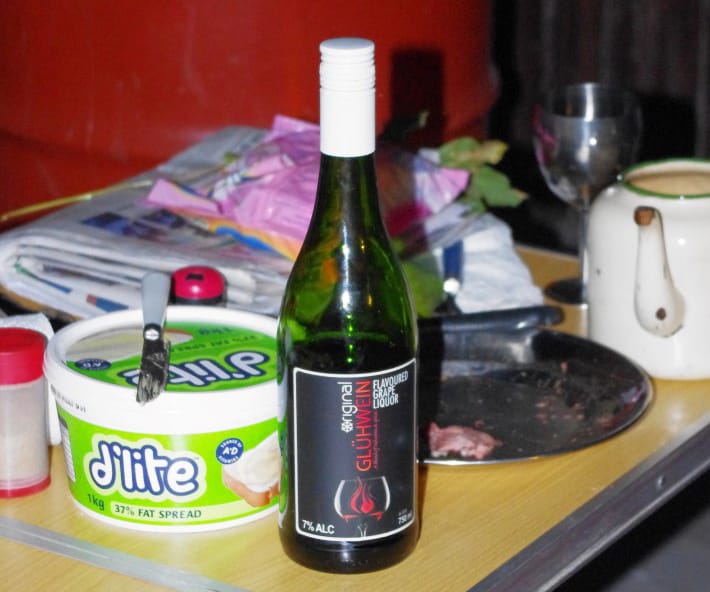
Some of the most memorable meals in Southern Africa emerge not from recipes, but from improvisation over glowing coals. Travellers in remote locations, from Namibia’s Spitzkoppe to Botswana’s Moremi Game Reserve, often find themselves with only a few ingredients and a fire, yet they create dishes that linger in memory long after the journey ends.
Cooking without a plan encourages creativity and allows the landscape itself to shape the meal.
The first requirement is patience. A fire must burn down to embers to provide steady, even heat. Once the coals are ready, a simple grill or potjie can accommodate almost anything. Overlanders frequently rely on a cast-iron pot to combine whatever is available, from fresh vegetables purchased at roadside stalls to tinned beans or leftover meat.
Building a reliable fire is the first step to successful cooking over coals, and it starts with mastering your technique. A classic method is the teepee style, where small kindling is arranged in a cone shape around a central fire starter, allowing air to flow and flames to catch quickly.
Another effective approach is the log cabin method, stacking sticks in a square pattern to create a stable structure that burns steadily. Whichever technique you choose, make sure to start with dry tinder such as paper, dry leaves, or small twigs to ignite your fire quickly and avoid smoke that can affect your food’s taste. Patience is key, as rushing the process can lead to uneven coals and unpredictable heat.
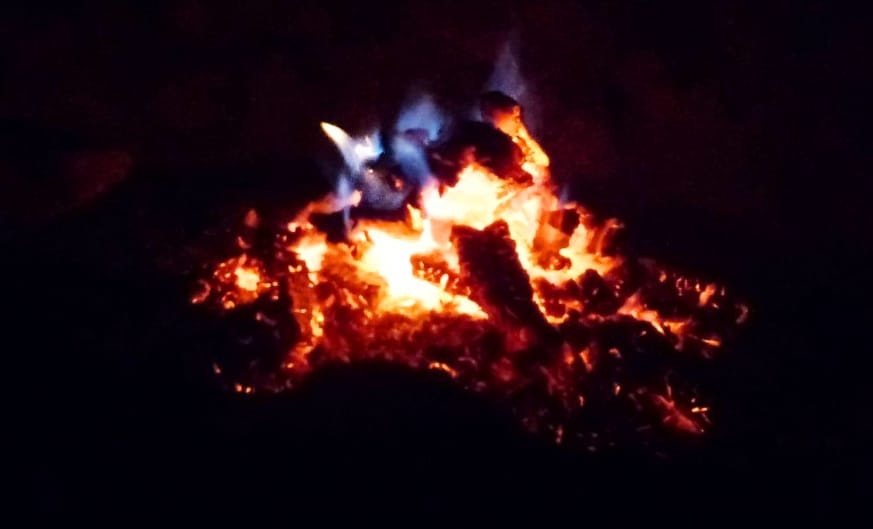
Selecting the right type of wood can transform your cooking experience. Hardwoods like acacia burn longer and produce consistent heat, making them ideal for slow-cooked meals. Softwoods such as pine ignite quickly but burn faster and can release resin, which may affect flavour.
Once your fire has burned down to glowing embers, managing them becomes crucial. Use a stick or metal tool to spread the embers evenly under your cooking area, creating a uniform heat source.
Adding small pieces of wood gradually helps maintain temperature, while careful control of airflow and removal of excess ash ensures your coals stay hot without flaring up, giving you perfect, controlled heat for grilling, roasting, or simmering your meals.
Once the flames settle into glowing embers, spreading them evenly under your cookware or gradually adding small sticks allows you to improvise the perfect heat pattern for grilling, roasting, or simmering.
By reading the fire and adjusting it to the moment, you not only control the cooking process but also form a tangible connection to the landscape, making each meal a reflection of both your creativity and the place in which it is cooked.
Improvised meals thrive on local staples. In South Africa’s Karoo, lamb or beef leftovers can be layered with sweet potatoes, pumpkin, and onions, then left to slow cook in the embers, creating a smoky, hearty stew.
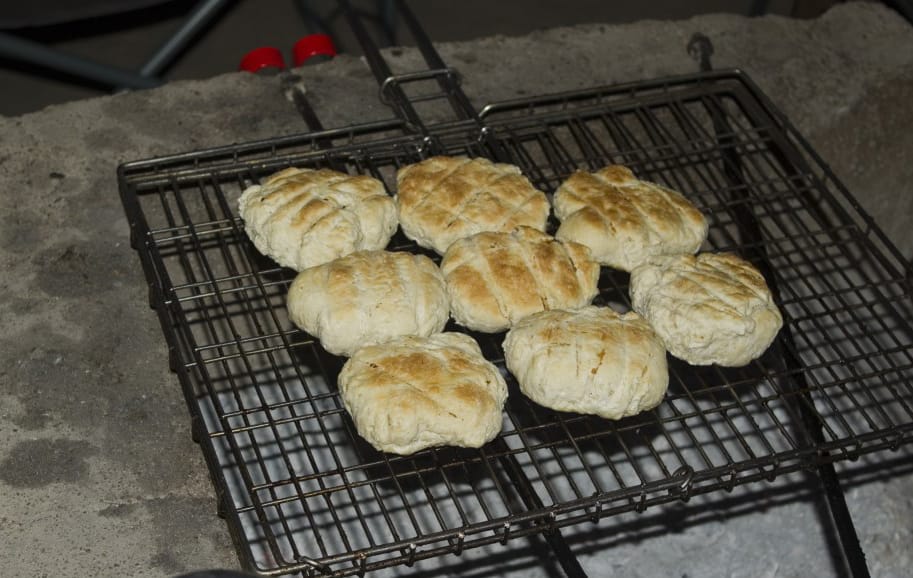
Along Mozambique’s coastline, travellers may find a handful of prawns or fish at a market, cooked simply with garlic, lemon, and salt over open flames. These dishes are spontaneous yet deeply tied to the region’s flavours.
Spontaneity allows travellers to discover unexpected flavour combinations.
Grilled maize from a Zimbabwean roadside vendor pairs beautifully with cheese, while tinned sardines simmered with tomatoes offer a surprisingly satisfying meal near Malawi’s Lake Nyasa.
Campers often wrap vegetables like bell peppers or butternut in foil, placing them directly in embers to achieve soft, smoky results. Even bread can be improvised: flour, water, and salt mixed into dough can be cooked as ash cakes directly on hot coals, producing a rustic accompaniment to any meal.
Adaptability is part of the experience. Travellers learn to read their ingredients, the fire’s intensity, and the available tools, turning limitations into culinary opportunities. Cooking without a fixed plan develops skill, patience, and a sense of play in the wild, making even simple ingredients feel like part of a ritual.
Meals cooked in this way are not only nourishing but also memorable. Each dish reflects the specific place, the day’s discoveries, and the improvisation required, creating a unique story for every fire. Sharing a spontaneous meal around a campfire in Namibia or Botswana transforms the act of eating into a moment of connection, reflection, and enjoyment.

• 𝙵𝚘𝚛 𝚜𝚝𝚘𝚛𝚢 𝚜𝚞𝚋𝚖𝚒𝚜𝚜𝚒𝚘𝚗𝚜 𝚘𝚛 𝚛𝚎𝚟𝚒𝚎𝚠𝚜, 𝚌𝚘𝚗𝚝𝚊𝚌𝚝 𝙼𝚊𝚛𝚒𝚊𝚗𝚊 𝚟𝚒𝚊 𝚎𝚖𝚊𝚒𝚕 (𝚎𝚍𝚒𝚝𝚘𝚛@𝚝𝚑𝚎𝚝𝚛𝚊𝚟𝚎𝚕𝚝𝚑𝚛𝚎𝚊𝚍.𝚌𝚘.𝚣𝚊).
• 𝙵𝚘𝚛 𝚙𝚊𝚛𝚝𝚗𝚎𝚛𝚜𝚑𝚒𝚙𝚜, 𝚖𝚊𝚛𝚔𝚎𝚝𝚒𝚗𝚐, 𝚘𝚛 𝚌𝚘𝚗𝚝𝚎𝚗𝚝 𝚎𝚗𝚚𝚞𝚒𝚛𝚒𝚎𝚜, 𝚌𝚘𝚗𝚝𝚊𝚌𝚝 𝙰𝚗𝚌𝚑𝚎𝚗 𝚟𝚒𝚊 𝚎𝚖𝚊𝚒𝚕 (𝚊𝚗𝚌𝚑𝚎𝚗@𝚒𝚘𝚕𝚘𝚐𝚞𝚎𝚖𝚎𝚍𝚒𝚊.𝚌𝚘𝚖) 𝚘𝚛 𝚜𝚎𝚗𝚍 𝚊 𝚆𝚑𝚊𝚝𝚜𝙰𝚙𝚙 𝚑𝚎𝚛𝚎.

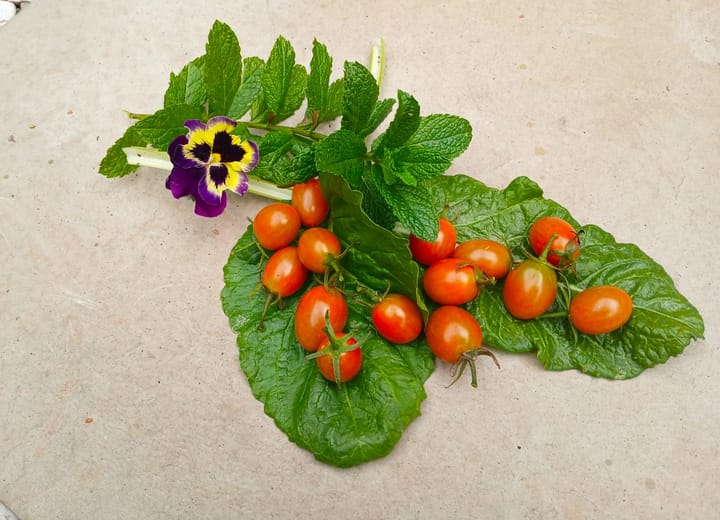
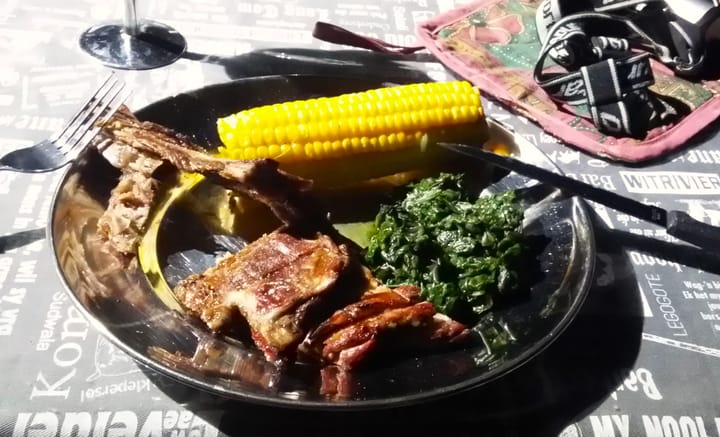
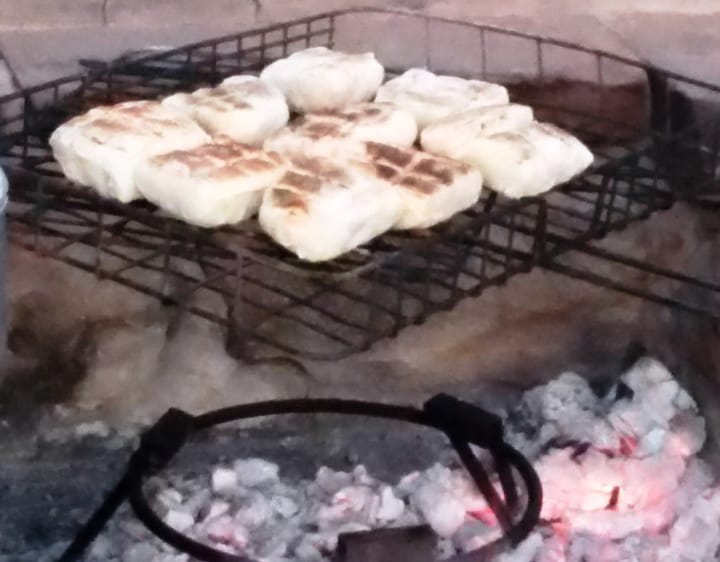
Comments ()